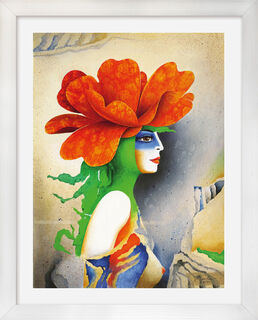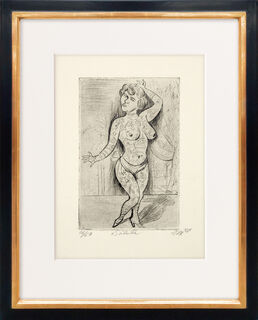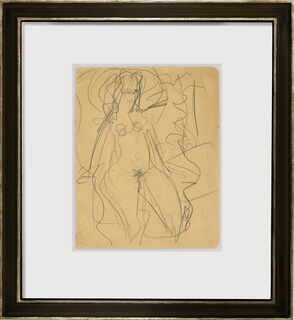Nude Painting
The Nude – A Classical Pictorial Theme in Painting and Photography
The nude has been a classical subject in both painting and photography, beloved by artists and audiences across various epochs. To this day, the unclothed human body remains a source of continuous artistic exploration and interpretation. The origins of nude art can be traced back to various early advanced civilisations, such as Egypt, Greece, and India. In European antiquity, deities such as Venus, Apollo or Diana were often depicted as nudes. Throughout art history, nude art remained primarily limited to religious, mythological, and historical motifs. It was only around the 19th century that secular figures gradually established themselves in nude painting. A significant advancement in the technique of nude painting occurred during the Renaissance when the study and depiction of the human body became a fundamental part of art academy education. Posing people without clothing initially served practical purposes. It allowed for better observation and understanding of body proportions and musculature, essential for transferring those insights into sculptures. Furthermore, the invention of photography in the 19th century brought about significant changes to nude art. With this new technique, realistic representations could be produced in a much shorter time. In addition, cameras were portable, eliminating the need for models to maintain immobile poses for extended periods. Nevertheless, despite the "flood of images" that accompanied the triumph of photography, the nude continued to prevail in painting.
The Symbolism and Meaning of Nudes
Nudes not only fulfil aesthetic demands as works of art, but they are also a mirror of society and can carry symbolic meanings. The portrayal of such a provocative subject as the naked body allows a precise assessment of aesthetic and moral standards prevalent in a given society. Moreover, nude depictions always reflect the beauty ideals of their respective epoch. The best example is the voluptuous female figures of Peter Paul Rubens. In his paintings, Rubens reproduced the image of women of the Renaissance. However, many artists also used nudes symbolically. They used them to symbolise purity and originality, expressing sensual pleasures or articulating a longing for freedom. In the history of art, the nude has often caused scandals. In many societies over the last centuries, the public display of naked people was considered provocative. Georg Baselitz, for example, caused a scandal in Germany in the 1960s when he presented nudes of men in an exhibition. The potential to create scandals with nude representations, however, proved advantageous for some artists and was strategically used to gain public attention and recognition.
Variants of Representation From Natural to Expressive
The modes of representation of nude painting changed alongside the styles of the respective epochs. Although the human body remained the focal point, the manner of depiction varied from natural to expressionistic and even approached the boundaries of abstraction. Examples of naturalistic representation in nude art are the famous Renaissance works "The Creation of Adam" by Michelangelo in the Sistine Chapel and "The Birth of Venus" by Sandro Botticelli. For a long time, artists remained attached to this style of painting, which was oriented toward natural body forms. However, this did not mean they painted real and contemporary male and female types. Often, mythological or biblical figures emerged from the artists' imaginations and adhered to idealising standards. It was not until Impressionism and Expressionism that artists increasingly abandoned the models of reality. It was no longer a question of portraying the body itself but of capturing body language and expression. Edvard Munch, for example, created a milestone in art history with his famous "Madonna" in 1894, in which the first expressionist features were already recognisable. Pablo Picasso also abandoned the natural form of representation in 1907 with his key work "Demoiselles d`Avignon". In the middle of the 20th century, the artists of Pop Art then presented new interpretations of the subject, for example, Tom Wesselmann with his series of "Great American Nudes" and Mel Ramos with his "Commercial Pin-Ups". In photography, which became increasingly popular in the 20th century, nudes were also part of the portfolio of many artists, for example, Man Ray or Helmut Newton. Until today, the nude photography and the nude painting remain standard elements in the work of many artists and exhibitions. In our online shop, you can explore a wide selection of nude artworks and purchase nude paintings.






























